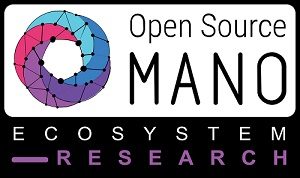The advances of Metro-Haul confirms that: “Skynet” is unavoidable.
“Terminator” is a Hollywood blockbuster movie sequel starring Arnold Schwarzenegger that was launched back in 1984 and currently the latest saga is on screens. The movie plot is around a fictitious Artificial Intelligence (AI) entity -the Skynet- which is so advanced that becomes self-aware, it is spread through the Internet and when people are  trying to neutralise it, Skynet is launching a war against the human race that brings us to the edge of extinction. In these movies, Arnold is playing the role of a humanoid robot T-800; as T-800 he has stated many times that: “Skynet is unavoidable”.
trying to neutralise it, Skynet is launching a war against the human race that brings us to the edge of extinction. In these movies, Arnold is playing the role of a humanoid robot T-800; as T-800 he has stated many times that: “Skynet is unavoidable”.
Well, is it..?
The EU-funded 5G PPP Metro-Haul project provides hard evidence that the time for a Skynet-like network control may come sooner that what it is generally believed. A number of recent publications [1],[2] originated from Metro-Haul, clearly demonstrate that a dynamic Metro Network can be built today based on a dynamic software defined control plane and a dynamic data-plane that exploits mature and standardised technology. This platform may provide a dynamic network management reconfiguration of the order of few seconds (e.g. [1],[2] demonstrated 4-9 seconds).
What these advances are telling us?
During the last 25-30 years the advances in the field Optical Packet Switching were considerable. However, none of the proposed innovative platforms made it to the market because of the general belief that a) these systems use an immature/impractical technology; b) the solutions are not scalable; c) no standardised platforms were used. The argument was that most -if not all- proposed solutions in that field are suffering from at least one of these drawbacks. The work of [1],[2] clearly demonstrated that i) the necessary technology for this slotted transportation solution is here for at least 15-20 years and ii) it can be cost-effective if a standardised platform, like the one xPON systems are providing, is used.
This is an important message on its own but also there are other far-reaching consequences stemming from this Metro-Haul innovation. In particular, zero-touch networking is seen today as an important step towards automation that may limit outages and network failures while it may improve OpEx. However, what is an just an important asset to slowly-reconfigurable networks (to which the reconfiguration window may extend from few months down to few hours), it is an indispensable necessity for dynamic Metro Networks.
With adaptability and reconfigurability of the order of seconds, it is literally impossible to conceive network management platforms that are based on manual operations. Here, humans are disposed out the network management loop as they may not plan, organise and execute commands in a decent way at such timescales. So, in the near future, humans would be limited to plan and provide guidelines only for the longer-term network policies. Skynet (that is, AI) is taking over on network management operations ushering the Zero-touch 2.0 epoch.
We don’t know what the future is going to be; as it has been stated many times in various “Terminator” episodes “there is no fate”. Indeed, Skynet is unavoidable, but it does not have to work against us. We need to design the evolution of technology in a way we ensure symbiosis with AI as this is key for our evolution.
References
[1] E. Kosmatos, C. Matrakidis, A. Stavdas, S. Horlitz, Th. Pfeiffer, A.Lord; “A Dynamic Transportation Platform for Metropolitan Networks Exploiting PON Technology and a Novel Control-Plane”; ECOC 2018, Rome, Italy [2] E. Kosmatos, C. Matrakidis, A. Stavdas, S. Horlitz, Th. Pfeiffer, A.Lord; “Building a Truly Dynamic Filterless Metro Network by Reusing a Commercial PON’s Data-Plane and a Novel SDN-enabled Control-Plane”, to appear in OSA/IEEE Journal of Lightwave Technology



